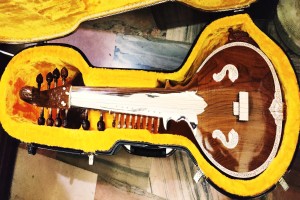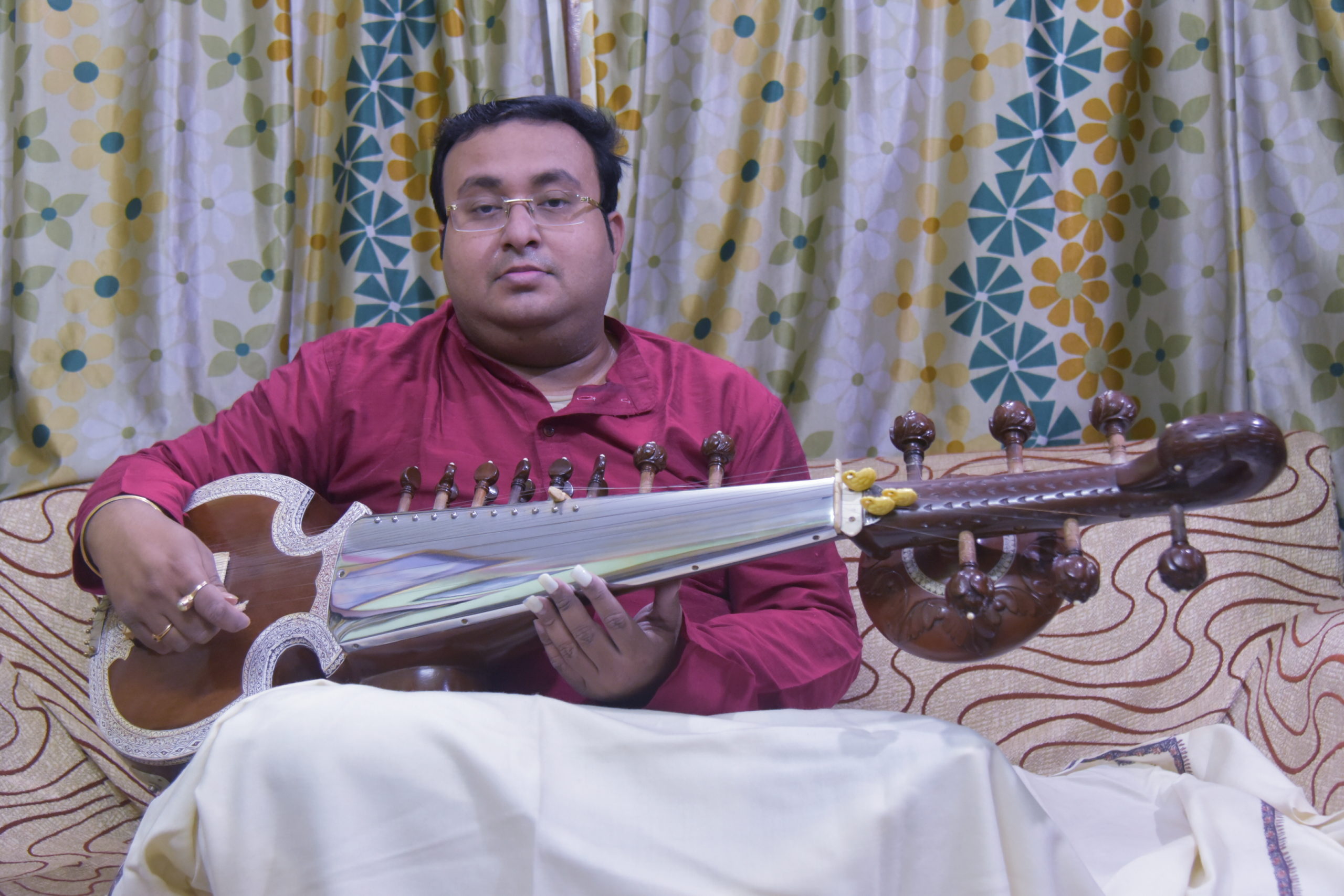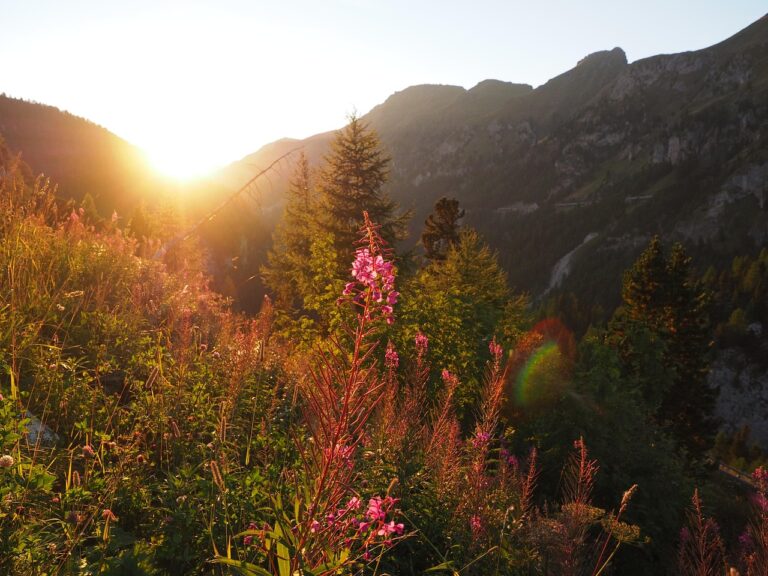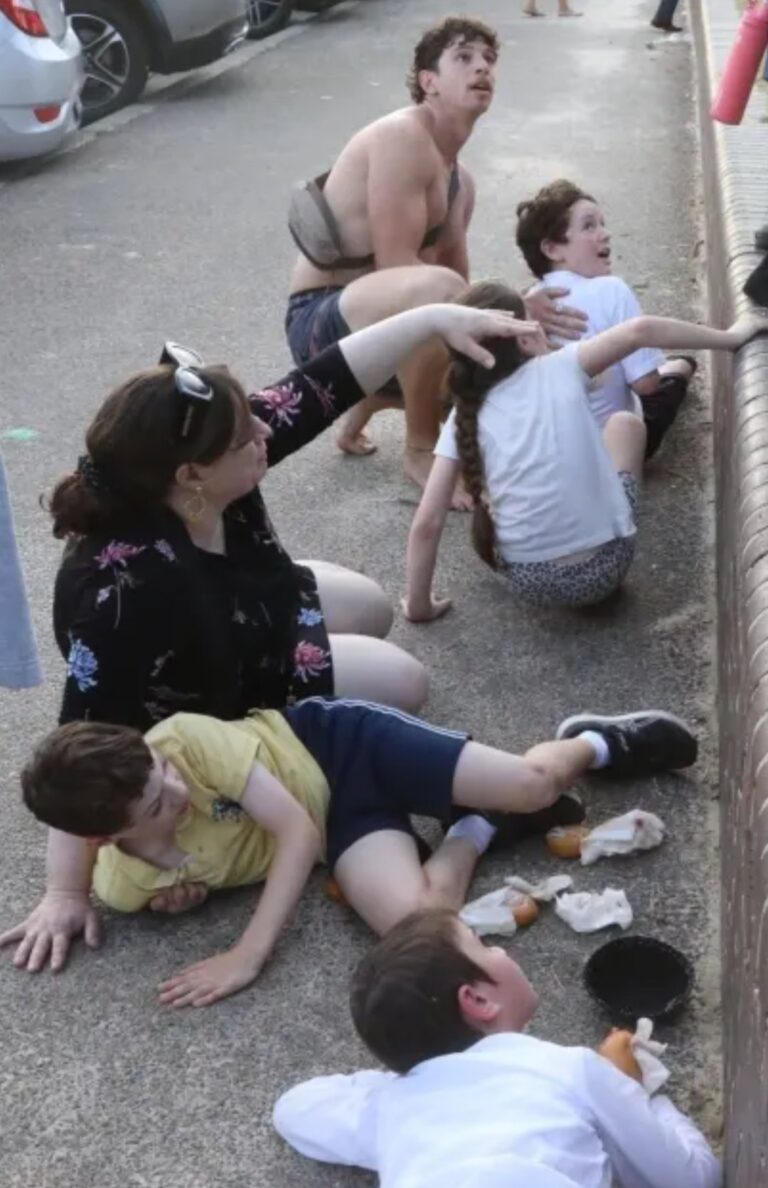
Interview: Pt. Joydeep Mukherjee
In one of our past features we covered how the traditional instruments of India, which once were a part of the Royal stages but got extinct, are getting revived by the millennial Sarod player Joydeep Mukherjee. Today we will hear how these instruments are being maintained, regular practise or riyaz is being done and how these instruments are performed.
We will hear renditions and sounds of these instruments too in this edition with Joydeep sharing a unique presentation with us. He has performed one raaga – Miya Ki Malhar in three different instruments. The three sequential parts of the performance he performed in these three instruments – ALAAP in Surshringer, JHOR in Radhika Mohanveena, JHALA in Sarod. These three instruments were tuned in three different scales.
Also read: Reviving the forgotten instruments of Indian music – 1

Q. In February this year you mentioned how you are reviving some rare instruments. Today, first of all, can you please tell us how you are maintaining these instruments?
A. Well, proper maintenance is always a challenge, especially when you have more than one instruments. There are a lot of constraints including weather change, normal wear and tear, regular riyaz, handling by more than one players, etc etc. The instruments which are regularly played have to be cleaned with a piece of cloth before and after everyday’s riyaz. The strings needs to be changed every quarter and also before any stage performance. The pegs of the instruments need to be filed by a filer and street chalks are rubbed before putting the strings over it. This ensures tightness of the pegs while hanging on the instruments. I change the strings after every monsoon. The main strings are changed by me while the sympathetic strings are changed by the maker/ repairer. The steel fingerboard needs to be electroplated and the goat skin over the sarod needs to be changed every 3 years. These work is to be done by an expert technical person. The sarod also needs to get polished at the
same time.
These things needs to be done for the other two rare instruments too – The Surshringer and Mohanveena.
Q. Is there anything specific about the maintenance of the rare instruments?
A. Surshringer and my Dadaguru’s Mohanveena don’t have goat skin but have wooden top and a flat bridge. These instruments need to be polished every 3 years. The fingerplate is made of stainless steel – which needs to be cleaned every day after performance by a clean piece of cloth. The flat bridge over the soundbox of the instrument need to be well maintained. The jawari work should be done by an expert maker to give the desired tone and resonance. When during playing of the instruments I put a piece of cloth under my hand so that the polish of the top of the soundbox don’t get damaged or faded due to my sweat.
Q. What strings do you use?
A. I have four Sarods and one each of Surshringer and Mohanveena, total six instruments. For steel strings I use the German Roslau strings which are very durable and can sustain high tension. Plus its sound quality is also great. For lower notes I use bronze wires which give very round and complete sounds of the lower octaves. Either I import those strings, or ask anyone who is travelling or buy myself when am travelling. I preserve these strings with bundles and sachets of silica gels to avoid getting attacked by moisture in the Indian climate.
Q. You had written in detail about the rare instruments earlier in our portal. Can you give small historical descriptions of these instruments?
A. Let me start with Surshringer. It was developed in the Royal Court of Varanasi probably during later 18 th or early 19 th century. There are several opinions regarding its origin. Some says Sur Shringer was first made by Syed Kalb Ali Khan Bahadur, the Nawab of Rampur. However, the most popular opinion says it was introduced by the descendants of Tansen, Ustad Pyaar Khan, Basant Khan and Jaffer Khan during early nineteenth century.
“Alaap” in Surshringer. Raag Miya Malhar. Artist Joydeep Mukherjee
This instrument is a combination of three instruments Mahati Veena, Kacchapi Veena & Rabab. The rabab players faced a difficulty during the monsoon. Due to moist weather the tension of the goat skinned drum reduces leaving very dull sound from the instrument. The problem solved with the invention of Sur Shringer – the tension remained as it is, moreover, long sliding notes added dynamicity in the instrument. However, with the development and modifications in Sarod and also due to the complex playing style, Sur Shringer lost its popularity mostly during 1940-50s.
“Jodh” in Radhika Mohanveena. Raag Miya Malhar. Artist Joydeep Mukherjee
Now coming to Radhika Mohan Maitra’s Mohanveena, it was around 1943-44, when the young Sarod player Radhika Mohan Maitra played Jugalbandi in Surshringar with Ustad Sadiq Ali Khan on Veena at a private concert in Lucknow which was attended by many great musicians of that time. Post the concert Maitra felt the necessity of a 3-in-1 instrument which would have the tonal quality of the Veena, resonance to that of the Surbahar and sweetness cum faster ‘bol-bani’ playing capability to that of a Sarod.
Knowing the difficulty of playing Surshringer, he was trying to find a bridge instrument between Surshringer and Sarod. After some years of experimentation, in 1948, he came up with a design of an instrument which looks like an amalgamation of Surbahar and Sarod. In the new instrument the essence of Surshringer, Veena, Surbahar and Sarod was incorporated.
Amazed by its design and sound quality, Thakur Jaidev Singh, the-then producer of All India Radio named the instrument as “Mohan Veena” after the name of Pt. Maitra in 1949. He also recorded an interview of Pt. Maitra along with a recital in the same year. It was one of the most successful experimentation of him where he played several National Programs and numerous AIR recordings on this instrument, which are now the assets of AIR archives.
In this instrument the goat skin of the sarod was replaced by light wood and the huge ‘tabli’ of Surbahar/ Surshringer is minimised. The bridge was flattened and one smaller bridge was added like the Surbahar for sympathetic strings, i.e. ‘Jawari’ component has been added.
However, post his retirement from the professional stage in 1977 and following his untimely death in 1981, the instrument became almost extinct.
“Jhala” in Sarod. Raag Miya Malhar. Artist Joydeep Mukherjee
So far as Sarod is concerned, this is not a rare instrument but an extremely popular instrument now-a-days. Developed from the Afghan and Senia Rabab during 1820s this instrument became extremely popular from 1940s. Earlier it was mandatory for all Sarod players to learn Surshringer for doing alaap but with the improvement of the tonal quality of Sarod from 1930s-40s, artists
started doing alaap in Sarod and hence use of a single instrument by a performer became a popular option especially during travelling.
Q. What precautions you use while you travel for performances in programmes?
A. For every instrument I use customised fibre case instrument box from reputed makers. These flight cases are pretty costly as its very hard and durable but light weight, have hard internal padding where the instrument can be kept tension free, strong butterfly locks, robust and resilient wheels to drag it outdoors and also have a very stylish look. I also keep my instruments inside those cases when am at my home too. It’s pretty safe inside it. I keep silica gel sachets too inside those boxes and thus the box also remains moisture free.
Q. Any specific incident you want to highlight regarding the maintenance or repairing of these instruments?
A. Very recently one of my rare instrument Surshringer got damaged suddenly while doing riyaz. The “chikari” post broke off breaking the main bridge from side which was made of camel bone. I realized the camel bone bridge is not suitable for my hand. I looked for a lengthier and wider bridge of a stronger material. I approached 8-10 instrument manufacturers but none can impress me. A couple of such makers showed some unique material but they quoted abnormally high rate in their estimate. But luckily I got a maker who provided me such unique bridge made of rhino’s spinal cord – robust, resilient, extremely durable and marvellous sound quality. I have shared the sound file with you.
– global bihari bureau





